Table of Contents
Claude Debussy: The 100 most inspiring musicians of all time
The works of French composer Claude Debussy (Achilles-Claude Debussy) (b. Aug. 22, 1862, Saint-German-en-Laye, France —d. March 25, 1918, Paris) have been a seminal force in the music of the 20th century. Debussy developed a highly original system of harmony and musical structure that expressed in many respects the ideals to which the impressionist and symbolism painters and writers of his time aspired.
Early Period
Debussy showed a gift as a pianist by the age of nine. He was encouraged by Madame Mauté de Fleurville, who was associated with the Polish composer Frédéric Chopin, and in 1873 he entered the Paris Conservatory, where he studied the piano and composition, eventually winning in 1884 the Grand Prix de Rome with his cantata L’Enfant prodigue (The Prodigal Child ).
While living with his parents in a poverty-stricken suburb of Paris, he unexpectedly came under the patronage of a Russian millionairess, Nadezhda Filaretovna von Meck, who engaged him to play duets with her and her children. He traveled with her to her palatial residences throughout Europe during the long summer vacations at the Conservatory. In Paris during this time he fell in love with a singer, Blanche Vasnier, the beautiful young wife of an architect; she inspired many of his early works.

This early style is well illustrated in one of Debussy’s best-known compositions, Clair de Lune. The title refers to a folk song that was the conventional accompaniment of scenes of the love-sick Pierrot in the French pantomime; and indeed the many Pierrot-like associations in Debussy’s later music, notably in the orchestral work Images (1912) and the Sonata for Cello and Piano (1915; originally titled Pierrot fâché avec la lune [“Pierrot Vexed by the Moon”]), show his connections with the circus spirit that also appeared in works by other composers.
Claude Debussy’s Sheet Music download.
Middle Period
As a holder of the Grand Prix de Rome, Debussy was given a three-year stay at the Villa Medici, in Rome, where, under what were supposed to be ideal conditions, he was to pursue his creative work. Debussy eventually fled from the Villa Medici after two years and returned to Blanche Vasnier in Paris. At this time Debussy lived a life of extreme indulgence. Once one of his mistresses, Gabrielle (“Gaby”) Dupont, threatened suicide. His first wife, Rosalie (“Lily”) Texier, a dressmaker, whom he married in 1899, did in fact shoot herself, though not fatally, and, Debussy himself was haunted by thoughts of suicide.
The main musical influences on Debussy were the works of Richard Wagner and the Russian composers Aleksandr Borodin and Modest Mussorgsky. Wagner fulfi lled the sensuous ambitions not only of composers but also of the symbolist poets and the impressionist painters.
Wagner’s conception of Gesamtkunstwerk (“total art work”) encouraged artists to refi ne upon their emotional responses and to exteriorize their hidden dream states, often in a shadowy, incomplete form; hence the more tenuous nature of the work of Wagner’s French disciples.
It was in this spirit that Debussy wrote the symphonic poem Prélude à l’après-midi d’un faune (1894). Other early works by Debussy show his affinity with the English Pre-Raphaelite painters; the most notable of these works is La Damoiselle élue (1888), based on The Blessed Damozel (1850), a poem by the English poet and painter Dante Gabriel Rossetti.
In the course of his career, however, which covered only 25 years, Debussy was constantly breaking new ground. His single completed opera Pelléas et Mélisande (first performed in 1902) demonstrates how the Wagnerian technique could be adapted to portray subjects like the dreamy nightmarish figures of this opera who were doomed to self-destruction.
Debussy and his librettist, Maurice Maeterlinck, declared that they were haunted in this work by the terrifying nightmare tale of Edgar Allan Poe, The Fall of the House of Usher. The style of Pelléas was to be replaced by a bolder, more highly coloured manner. In his seascape La Mer (1905) he was inspired by the ideas of the English painter J. M.W. Turner and the French painter Claude Monet. In his work, as in his personal life, he was eager to gather experience from every region that the imaginative mind could explore.
Late Period
In 1905 Debussy’s illegitimate daughter, Claude-Emma, was born. He had divorced Lily Texier in 1904 and subsequently married his daughter’s mother, Emma Bardac. For his daughter he wrote the piano suite Children’s Corner (1908).
Debussy’s spontaneity and the sensitive nature of his perception facilitated his acute insight into the child mind, an insight noticeable particularly in Children’s Corner; in the Douze Préludes, two books (1910, 1913; “Twelve Preludes”), for piano; and in the ballet La Boîte à joujoux (1st perf. 1919;
The Box of Toys). In his later years, it is the pursuit of illusion that marks Debussy’s instrumental writing, especially the strange, otherworldly Cello Sonata. This noble bass instrument takes on, in chameleon fashion, the character of a violin, a flute, and even a mandolin.
Evolution of His Work
Debussy’s music marks the first of a series of attacks on the traditional language of the 19th century. He did not believe in the stereotyped harmonic procedures of the 19th century, and indeed it becomes clear from a study of mid-20th-century music that the earlier harmonic methods were being followed in an arbitrary, academic manner.
Debussy’s inquiring mind similarly challenged the traditional orchestral usage of instruments. He rejected the traditional dictum that string instruments should be predominantly lyrical. The pizzicato scherzo from his String Quartet (1893) and the symbolic writing for the violins in La Mer, conveying the rising storm waves, show a new conception of string colour. Similarly, he saw that woodwinds need not be employed for fireworks displays; they provide, like the human voice, wide varieties of colour.
Debussy also used the brass in original colour transformations. In fact, in his music, the conventional orchestral construction, with its rigid woodwind, brass, and string departments, finds itself undermined or split up in the manner of the Impressionist painters. Ultimately, each instrument
becomes almost a soloist, as in a vast chamber-music ensemble. Finally, Debussy applied an exploratory approach to the piano, the evocative instrument par excellence.
In his last works, the piano pieces En blanc et noir (1915; In Black and White) and in the Douze Études (1915; “Twelve Études”), Debussy had branched out into modes of composition later to be developed in the styles of Stravinsky and the Hungarian composer Béla Bartók. It is certain that he would have taken part in the leading movements in composition of the years following World War I. His life, however, was tragically cut short by cancer.
The Best of Debussy
Pianist: Pascal Rogé
Track List:
Arabesque Nº1 4:21 Arabesque Nº2 7:49 Clair De Lune 13:29 Passepied 16:46 Rêverie 21:40 Hommage A Rameau 29:22 Voiles 33:41 Les Sons Et Les Parfums Tournent Dans L’air Du Soir 37:58 La Fille Aux Cheveux De Lin 41:02 La Cathédral Engloutie 48:10 Musiciens 50:35 Le Petit Berger 54:05 Golliwogg’s Cakewalk 57:13 L’isle Joyeuse 1:03:35 Prelúdio para a tarde de um fauno
Browse in the Library:
| Artist or Composer / Score name | Cover | List of Contents |
|---|---|---|
| Tchaikovsky Piano Concerto No. 1, easy piano solo arr. | Tchaikovsky Piano Concerto No. 1, easy piano solo arr. | |
| Tchaikovsky Romeo and Juliet Overture Fantasy Arr. for 2 pianos |
 |
|
| Tchaikovsky Romeo and Juliet Overture Fantasy Arr. for 2 pianos.mscz | ||
| Tchaikovsky Serenade For Strings 1st Mov. (Musescore File).mscz | ||
| Tchaikovsky Swan Lake Piano Solo Arr. Main Theme.mxl | ||
| Tchaikovsky Symphony n. 6 Op. 76 (paino solo arr. by Pachulski) |
 |
|
| Tchaikovsky Symphony No. 6 4th Movement (Piano Solo) (Musescore File).mscz | ||
| Tchaikovsky The Man And His Music David Brown Book |
 |
|
| Tchaikovsky Waltz Of The Flowers From The Nutcracker (Piano 4 Hands) (Musescore File).mscz | ||
| Tchaikovsky-Vedernikov Symphony No 6 ”Pathetique” In B Minor Op 74 (Arranged For Piano) | Tchaikovsky-Vedernikov Symphony No 6 | |
| Tchaikovsky, Guide to the practical study of Harmony (1900) |
 |
|
| Teach Yourself Rock Piano (Professional Know-How) |
 |
|
| Teach Yourself Visually Piano (Mary Sue Taylor, Tere Stouffer) Sheet Music |
 |
Teach Yourself Visually Piano (Mary Sue Taylor, Tere Stouffer) Sheet Music |
| Teardrops (Gabriel Thorn) | ||
| Tears For Fears – Head Over Heels | ||
| Tears For Fears – Mad World | ||
| Tears For Fears Tears Roll Down Greatest Hits 82 92 |
 |
Tears For Fears Tears Roll Down Greatest Hits 82 92 |
| Technic Is Fun Book 1 Late Elementary By David Hirschberg |
 |
Technic Is Fun Book 1 Late Elementary By David Hirschberg |
| Techniques Of Improvisation 1 by David Baker |
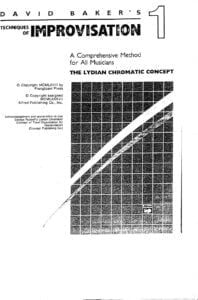 |
|
| Ted Gioia The Jazz Standards A Guide To The Repertoire |
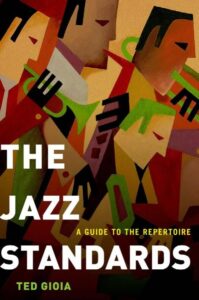 |
|
| Ted Greene My Funny Valentine Guitar Tablatur TABs |
 |
|
| Teddy Wilson 19 Selected Piano Solo Transcriptions |
 |
Teddy Wilson piano solo transcriptions |
| Teddy Wilson Collection 12 Transcriptions |
 |
Teddy Wilson Collection 12 Transcriptions |
| Teddy Wilson Piano Creations Of Standards Songs |
 |
Teddy Wilson Piano songbook |
| Teddy Wilson Piano Patterns |
 |
Teddy Wilson Piano Patterns |
| Tema di Ada (Novecento OST) Ennio Morricone | ||
| Tema di Elisa (Elisa di Rivombrosa OST) Savio Riccardi | ||
| Tema di Francesca – La moglie più bella OST (Ennio Morricone) | ||
| Temptations – My Girl | ||
| Tenderness In The Air – From Final Fantasy V By Nobuo Uematsu (Musescore File).mscz | ||
| Tendre Marie-Charlotte – L’incorrigible OST (Georges Delerue) | ||
| Tenero abbraccio – Elisa di Rivombrosa OST (Savio Riccardi) | ||
| Tennessee Whiskey By Linda Hargrove and Dean Dillon Piano Vocal Guitar Chords |
 |
|
| Tenor Saxophone 20 Jazz Etudes Vol 1 Tenor by Gregory B. Taylor Jr. |
 |
|
| Teoria Musical – Contrapunto – Alan Belkin (Spanish-Español) | Book Theory | |
| Teoria Musical Para Dummies + MP3 (Spanish-Español) Michael Pilhofer-Holly Day |
 |
|
| Teoria Musical y Armonía Moderna Vol 2 (Enric Herrera) Español – Spanish |
 |
|
| Teoria Musical y Armonia Moderna Vol.1 Enric Herrera (Español – Spanish) |
 |
|
| Terence Snider – Take Five (by Paul Desmond) transcription |
 |
|
| Terrence Shider – Wave (Jobim) Sheet Music transcription | Terrence Shider – Wave (Jobim) Sheet Music transcription | |
| Terry Burrows – How To Read Music (with audio MP3) |
 |
Terry Burrows – How To Read Music |
| Terry Scott Taylor Klaymen’s Theme | Terry Scott Taylor Klaymen’s Theme | |
| Tete Montoliu – Au Privave |
 |
|
| Tete Montoliu – Feelings (Morris Albert) |
 |
Tete Montoliu Feelings |
| Tete Montoliu – Feelings – My Way – Au Privave compilation |
 |
|
| Tete Montoliu – It Never Entered My Mind |
 |
|
| Tete Montoliu – My Way – Comme D’Habitude |
 |
|
| Tete Montoliu A Child Is Born |
 |
|
| Tete Montoliu Giant Steps |
 |
|
| Tete Montoliu When I Fall In Love – Victor Young |
 |
|
| Tetris – Tetris Main Theme Piano Sheet Music |
 |
|
| Tetris Theme Korobeiniki (Piano Solo Tiles Arr.) |
 |
|
| Texas – Black Eyed Boy | ||
| Texas Say What You Want | Texas Say What You Want | |
| Texas Southside Guitar Songbook with Tablature |
 |
Texas Southside Guitar Songbook |
| The Most Requested Jazz Standards (75 songs) pdf |
 |
The Most Requested Jazz Standards |
| The 100 Most influential Musicians of all Time (Brittanica Guide to) Book |
 |
|
| The 70’s Rock Score |
 |
|
| The Accidental Tourist – A Second Chance – John Williams | ||
| The Act Of Touch In All Its Diversity An Analysis And Synthesis Of Pianoforte Tone Production (By Tobias Matthay) (1903) |
 |
|
| The Addams Family – Love On A Tombstone – Marc Shaiman | ||
| The Addams Family The Musical by Andrew Lippa Vocal Selections |
 |
The Addams Family The Musical by Andrew Lippa Vocal Selections |
| The Addams Family Theme Piano Solo |
 |
|
| The Ahrens & Flaherty Songbook For Piano Vocal And Chords |
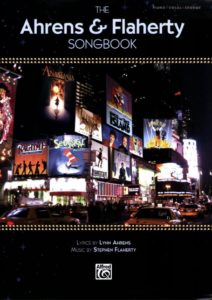 |
|
| The Alan Parsons Project – Sirius (Musescore File).mscz | ||
| The Alchemist (Russel Watson & Lara Fabian) | ||
| The All Time Best Collection vol. 3 | The All Time Best Collection vol3.PDF | |
| The alley cat (Liberace) | ||
| The Angel (Lust, Caution OST) Alexandre Desplat | ||
| The Animals – House Of The Rising Sun | The Animals – House Of The Rising Sun | |
| The Anna Magdalena Bach Book of 1725 (Richard Jones) ABRSM |
 |
|
| The Aristocrats Blues Fuckers Guitar Tabs Pdf |
 |
|
| The Aristocrats Cocktail Umbrellas Guitar Tabs |
 |
|
| The Aristocrats And Finally Guitar Tabs |
 |
|
| The Aristocrats Bad Asteroid Guitar Tabs |
 |
|
| The Aristocrats Dance Of The Aristocrats Guitar Tabs |
 |
|
| The Aristocrats Get It Like That Guitar Tabs |
 |
|
| The Aristocrats Living The Dream Culture Clash Guitar Tabs |
 |
|
| The Aristocrats Sweaty Knockers Guitar Tabs |
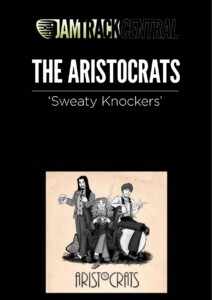 |
|
| The Art Of Blues Solos by Robben Ford (Guitar with Tablature) |
 |
The Art Of Blues Solos by Robben Ford (Guitar) |
| The Art Of Improvisation (Organ) – by T. Carl Whitmer |
 |
|
| The Art of Jazz improvisation book 1 Bob Taylor |
 |
|
| The Art of Jazz improvisation book 2 Bob Taylor |
 |
|
| The Art Of Music – Cambridge Library Collection (Book) |
 |
|
| The Art Of Partimento |
 |
|
| The Art Of Piano Fingering A New Approach To Scales And Arpeggios (Penelope Roskell) Book |
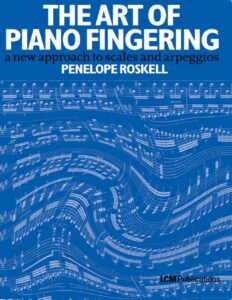 |
|
| The Art Of Piano Playing Heinrich Neuhaus Book |
 |
|
| The Art Of Piano Playing – A Scientific Approach by George Kochevitsky (1996) |
 |
|
| The Art Of Pianoforte Playing (By Ernst Pauer) (1877) |
 |
|
| The Art of Ragtime Guitar with MP3 audio tracks with Tablature |
 |
The Art of Ragtime Guitar with MP3 audio tracks sheet music pdf |
| The Art Of The Player-Piano – A Text-Book For Student And Teacher (By Sydney Grew) (1922) | ||
| The Artist At The Piano (George Woodhouse) (1910) |
 |
|
| The Augmented Scale In Jazz A Players guide for all instruments by Walt Weiskopf And Ramon Ricker |
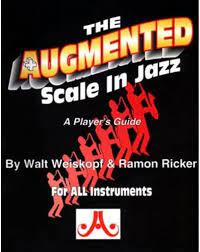 |
|
| The Authentic Guitar Style Of Harry Chapin With Tabs |
 |
The Authentic Guitar Style Of Harry Chapin With Tabs |
| The Avett Brothers Best Of The Avett Brothers Songbook |
 |
The Avett Brothers Best Of The Avett Brothers Songbook |
| The Band Music and Music From Big Pink Piano Vocal Guitar Chords |
 |
The Band Music and Music From Big Pink Piano Vocal Guitar Chords |
| The Bangles – Eternal Flame | ||
| The Beach Boys Pet Sounds |
 |
The Beach Boys Pet Sounds |
| The Beatles Beatles Collection Band Score Arr Johan De Meij |
 |
|
| The Beatles Sgt Pepper’s Lonely Hearts Club Band Guitar Tablature (13 Songs) |
 |
|
| The Beatles Songbook (Full Band Score) |
 |
|
| The Beatles Strawberry Fields Forever As Played By Andy Timmons Guitar With Tabs | The Beatles Strawberry Fields Forever As Played By Andy Timmons Guitar With Tabs | |
| The Beatles The Symphonic Beatles (Concert Band Series Conductor Score) |
 |
|
| The Beatles Basslines – Transcribed by Phil Mulford |
 |
The Beatles Basslines – Transcribed by Phil Mulford |
| The Beatles Revolver (Guitar songbook with Tablature) |
 |
The Beatles Revolver (Guitar songbook) |
| The Beatles – A Hard Days Night | ||
| The Beatles – Across The Universe Easy Solo Piano |
 |
|
| The Beatles – All Songs 1962-1974 (piano, vocal & guitar) |
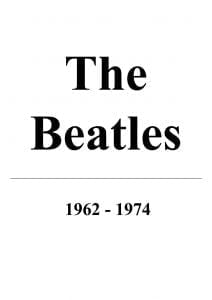 |
The The Beatles – All Songs 1962-1974 (piano-vocal) |
| The Beatles – All The Songs The Story Behind Every Beatles Release |
 |
The Beatles – All The Songs The Story Behind Every Beatles Release |
| The Beatles – BLACKBIRD Jazzy ver. | The Beatles – BLACKBIRD Jazzy ver. | |
| The Beatles – Complete Scores Full Transcriptions from the original recordings (Every Song written & recorded by The Beatles) |
 |
|
| The Beatles – Complete Songbook For Guitar, Tabs And Chords |
 |
The The Beatles – Complete Songbook For Guitar, Tabs And Chords |
| The Beatles – Eight Days A Week | ||
| The Beatles – Eleanor Rigby | ||
| The Beatles – Eleanor Rigby Concert Band Full Score Arr. by Larry Moore |
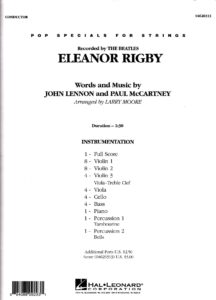 |
|
| The Beatles – Here There And Everywhere | ||
| The Beatles – Hey Jude (Piano, vocal, Guitar chords) | The Beatles hey-jude | |
| The Beatles – I Want To Hold Your Hand | ||
| The Beatles – It’s Easy To Play Beatles 1 |
 |
The Beatles – It’s Easy To Play Beatles 1 |
| The Beatles – It’s Easy To Play Beatles 2 |
 |
The Beatles – It’s Easy To Play Beatles 2 |
